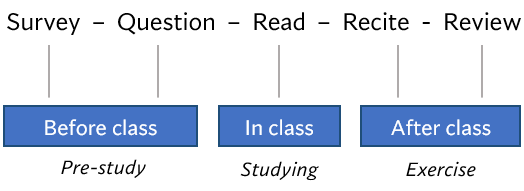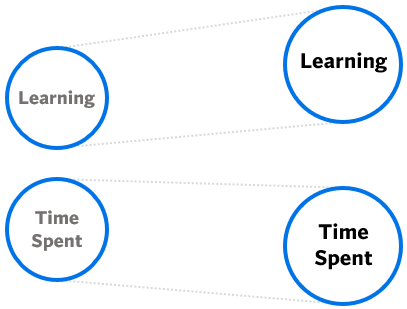A structured reading routine that boosts comprehension and retention through active learning steps.
Why Reading Needs Structure
Many people read passively and struggle to retain information. Without a structured process, comprehension fades quickly.
The SQRRR method offers a systematic approach to active reading that strengthens both learning and self-improvement.
What the SQRRR Method Is About
The SQRRR method, also called SQ3R, was introduced by Francis Pleasant Robinson in his 1946 book Effective Study. The model was created to help students study more effectively, but today it is widely used in education, training, and personal learning.
It’s a structured and effective approach to reading material more efficiently, boosting both comprehension and retention.
Breaking Down the Core Steps
SQRRR stands for Survey, Question, Read, Recite, and Review.
Here's a breakdown of each step:
Survey
Before diving into the material, skim through it to get an overview. Look at headings, subheadings, bolded words, images, and summaries.
Also pay attention to visuals like icons, pictures, and formulas—they often highlight key concepts.
This quick scan helps you understand the structure and main points of the text.
Question
As you survey the material, formulate questions about what you’re about to read.
This step keeps you actively engaged and focused on key details.
You can create different types of questions:
- Factual questions: These seek specific information, like dates, names, definitions, or descriptions.
- Conceptual questions: These focus on understanding key concepts, theories, or principles presented in the material.
- Analytical questions: These prompt you to analyze and evaluate information, draw connections between ideas, or consider implications and outcomes.
- Application questions: These ask how the concepts or information can be applied in real-life situations.
Remember that the questions you formulate are meant to guide your reading, not restrict it. Stay open to new insights and information that may arise as you progress through the material.
Read
Now, read the material actively, paying attention to the questions you’ve formed.
Highlight key points, take notes, and write down anything that’s unclear.
Pause periodically to summarize what you've learned in your own words. This helps reinforce your understanding and connects new ideas with what you already know.
Recite
After reading, close the book or look away from the screen and try to recall what you just learned.
Summarize the key points, explain concepts in your own words, or answer the questions you created earlier.
This step reinforces your memory and deepens your understanding.
Review
Finally, go over everything you’ve learned.
Review your notes, revisit tough concepts, and ensure you’ve grasped all the important details.
Use techniques like flashcards, summaries, or even teaching the material to someone else to reinforce your understanding.
Why Use the SQRRR Method?
By following the SQRRR method, you can engage actively with the material, improve comprehension, and enhance retention of information.
It's particularly useful for studying textbooks, academic articles, or any content that requires deep understanding and retention.
While the SQ3R method provides a structured approach to studying, it's important to remember that everyone learns differently, and what works for one person may not work for another.
Therefore, you don't necessarily need to strictly follow the steps outlined in SQ3R if you find another study method more effective for you.
However, the steps in SQ3R are designed to promote active engagement with the material, which can be beneficial for many learners.
You can certainly adapt and modify the method to suit your individual learning style and preferences.
For example, you might find that you prefer to combine steps or add additional strategies to enhance your comprehension and retention.
Not Just For Reading
As many of you might see, the essence of this model is the logic of learning.

Survey and Question are equivalent to pre-study, the first R (Read) is studying, and the last 2R (Recite and Review) are equivalent to post-class review. So the model is not limited to efficient reading, but efficient self-study in many fields can also use this routine.
Efficiency Beyond Speed
Although we defined SQ3R as an efficient method of reading, efficiency in this context does not simply mean reading speed, but rather effectiveness, the cost-effectiveness here is the learning versus time spent in reading.

It may seem to take more time than normal reading, but it also greatly improves our ability to digest knowledge, and in terms of cost-effectiveness, it is indeed efficient.
AI Prompt of SQ3R for Learning New Things
Use this prompt to help you learn new things with this method.


